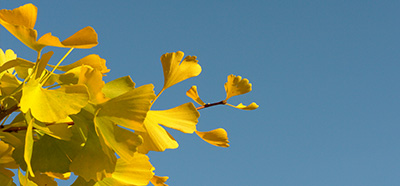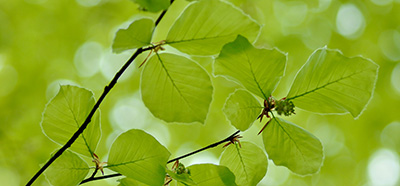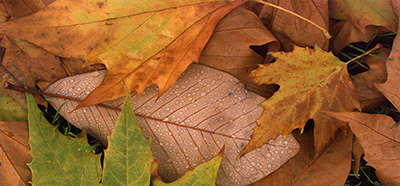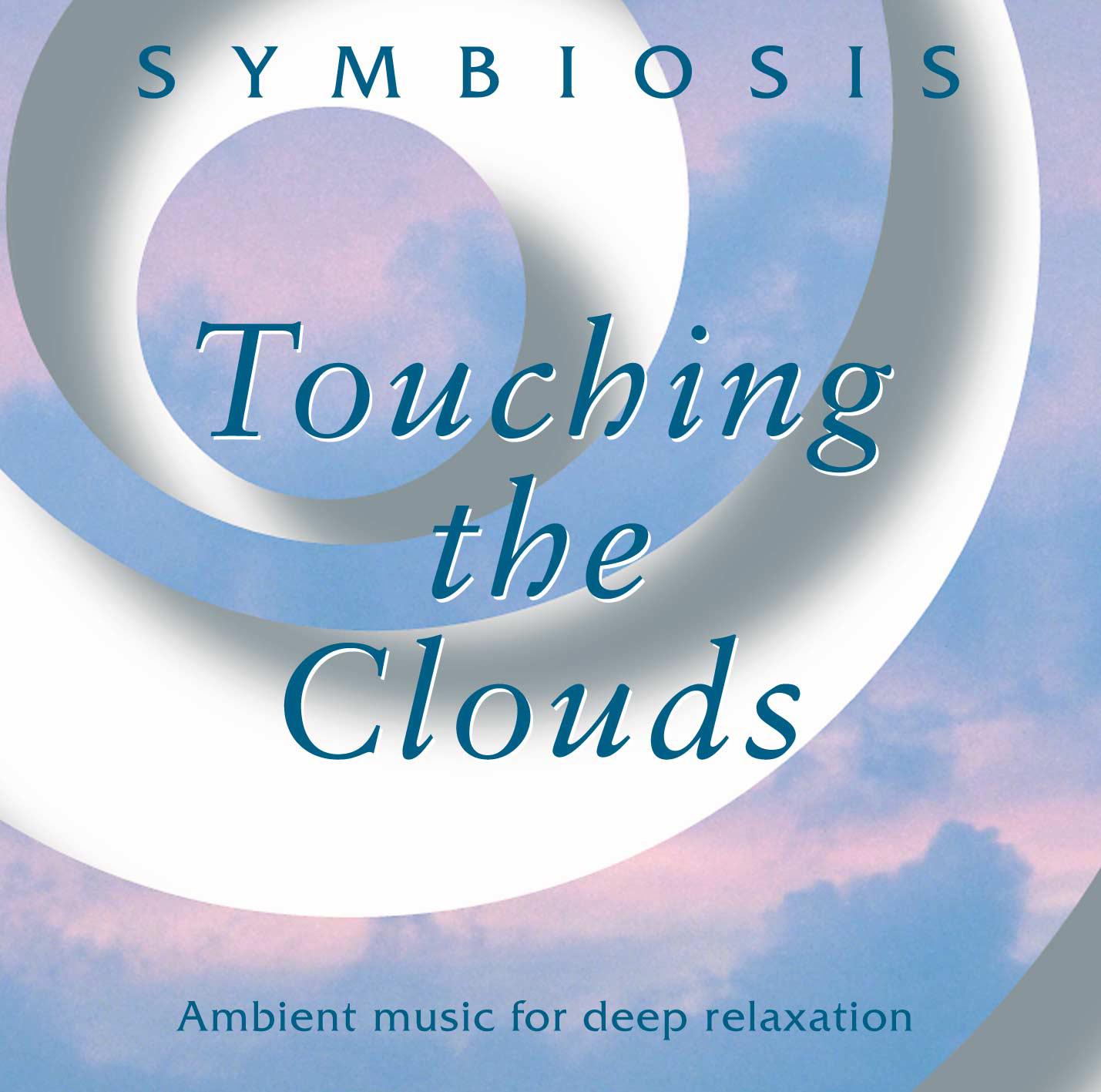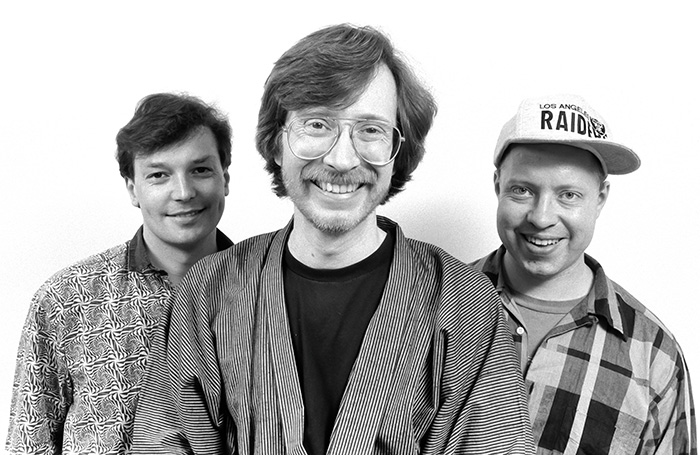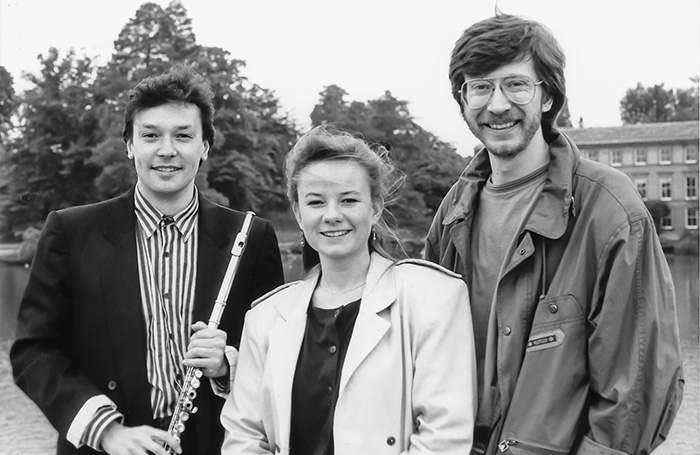About Symbiosis
Origins
“Our goal has always been to use technology intuitively and creatively, so that our music – and the way we present it – is as natural and as inventive as possible. I think the best use of technology is often when it is completely transparent to our listeners, but has enabled us to make better recordings – with more heart-felt and inspired playing, writing and mixing – than would have been possible using traditional methods!”
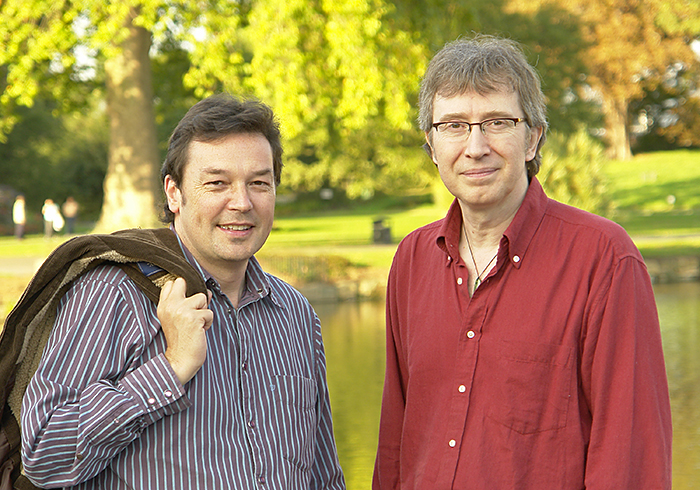
John & Clive
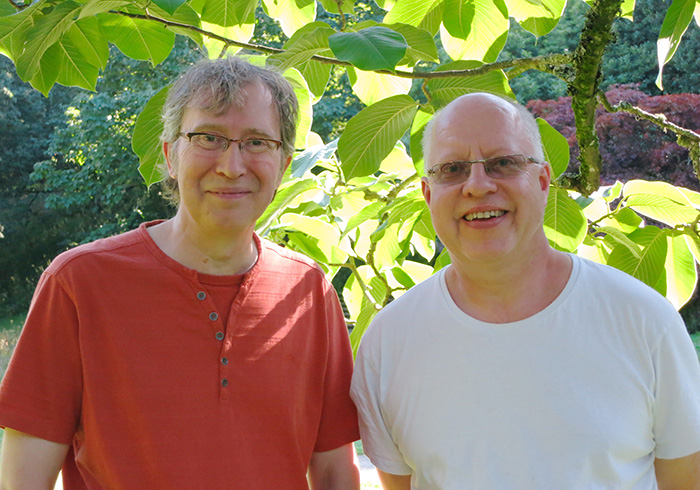
Clive & Richard
The group began by providing instrumental music and theme tunes for BBC radio and TV programmes in the UK. Their compositions have since been broadcast in the USA, Australia, and New Zealand and on the BBC’s World Service. Music by Symbiosis was featured in “The Day They Made It Rain”, a BBC documentary which won the Sony Radio Academy Gold Award for Best News Programme in 2002.
Symbiosis can also be heard on retail projects from the BBC, Longman and best-selling author Denise Linn and they have established their own range of highly successful relaxation music albums in the UK, which are now sold globally through iTunes and Amazon Digital Music.
In 1997, Symbiosis released their first pure sound effects album: AOTEAROA – Nature Sounds of New Zealand. These relaxing recordings by Clive Williamson captured the true beauty of the nature and landscape of New Zealand – the ‘Land of the Long White Cloud’ and have been extended and re-mastered as New Zealand Naturally (2018). Their recent release At Peace with Nature features calming natural sounds and beautiful birdsong from NZ, the UK, Colombia & Australia. (This album supports NHS and Care Home workers in the UK.)
FAQ
Origins

John & Clive
The group expanded to include cittern and mandolin player Ashley Drees; flautist and singer Emily Sinclair; and a number of guest musicians including Sarah Devonald (oboe and Cor Anglais), Ian Ritchie (soprano sax), Maloviere (violin and tsimbala) and percussionist Michèle Drees. Clive has used both analogue and digital recording methods to capture their performances and creates all their album covers using ‘ambient images’ from nature.

Clive & Richard
“Our goal has always been to use technology intuitively and creatively, so that our music – and the way we present it – is as natural and as inventive as possible. I think the best use of technology is often when it is completely transparent to our listeners, but has enabled us to make better recordings – with more heart-felt and inspired playing, writing and mixing – than would have been possible using traditional methods!”
The group began by providing instrumental music and theme tunes for BBC radio and TV programmes in the UK. Their compositions have since been broadcast in the USA, Australia, and New Zealand and on the BBC’s World Service. Music by Symbiosis was featured in “The Day They Made It Rain”, a BBC documentary which won the Sony Radio Academy Gold Award for Best News Programme in 2002.
Symbiosis can also be heard on retail projects from the BBC, Longman and best-selling author Denise Linn and they have established their own range of highly successful relaxation music albums in the UK, which are now sold globally through iTunes and Amazon Digital Music.
In 1997, Symbiosis released their first pure sound effects album: AOTEAROA – Nature Sounds of New Zealand. These relaxing recordings by Clive Williamson captured the true beauty of the nature and landscape of New Zealand – the ‘Land of the Long White Cloud’ and have been extended and re-mastered as New Zealand Naturally (2018). Their recent release At Peace with Nature features calming natural sounds and beautiful birdsong from NZ, the UK, Colombia & Australia. (This album supports NHS and Care Home workers in the UK.)
FAQ
The Science of Relaxation
A study at Kingston University has shown that listening to Symbiosis can reduce the heartbeat rate, and therefore help people to relax. In tests, music from Touching the Clouds was found to be the most successful at reducing the pulse, tying in first place with a slow movement by Vivaldi.
Doctors at St. Bartholomew’s hospital in London have used Symbiosis’s music as part of a study to see if relaxation tapes can be used with – or even instead of – conventional medication to treat some stress-related problems.
The Science of Relaxation
A study at Kingston University has shown that listening to Symbiosis can reduce the heartbeat rate, and therefore help people to relax. In tests, music from Touching the Clouds was found to be the most successful at reducing the pulse, tying in first place with a slow movement by Vivaldi.
Doctors at St. Bartholomew’s hospital in London have used Symbiosis’s music as part of a study to see if relaxation tapes can be used with – or even instead of – conventional medication to treat some stress-related problems. Read more.
The Science of Relaxation
A study at Kingston University has shown that listening to Symbiosis can reduce the heartbeat rate, and therefore help people to relax. In tests, music from Touching the Clouds was found to be the most successful at reducing the pulse, tying in first place with a slow movement by Vivaldi.
Doctors at St. Bartholomew’s hospital in London have used Symbiosis’s music as part of a study to see if relaxation tapes can be used with – or even instead of – conventional medication to treat some stress-related problems. Read more.
Symbiosis through the Years
Symbiosis through the Years
Symbiosis support Butterfly Conservation (UK) and Tiritiri Matangi Island (NZ).
All content on this website © Symbiosis Music 2000-2021 unless otherwise stated.
